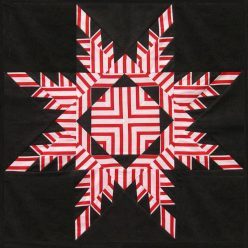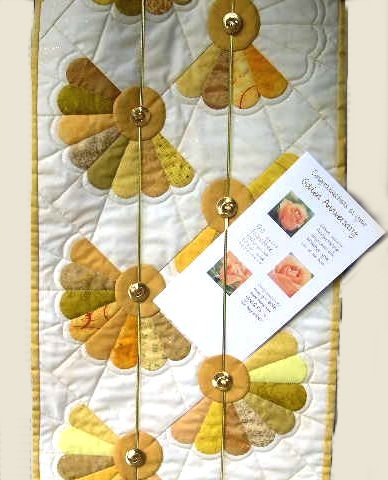
Sections of the classic “Dresden Plate” are used to make this Celebration Card Hanger.
This pattern has proved popular over the last few years, and can be bought as a download from my online Shop for £8
The centre circles are sewn on with an open top, forming a little pocket so that cards can be tucked under the gold elastic and into the pocket.
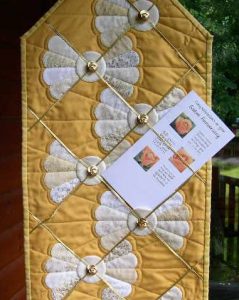
Design variations
Two long strips of this Card Hanger are joined together with a strong tape, and hung over a door, so that one side is, for example in your living room, and the other in your hall.
As there are two ways of arranging the Dresden Plate units, you could make both sides with the same design variation, or try one of each, as I did.
In the first version shown, quarter “plates” are arranged to form Butterflies.
However, if two quarter plates are put together, fans are formed instead:

Choosing fabrics
Dresden plate needs to be made with a variety of fabrics, to show off the “petals”.
The colours chosen can make this suitable for any special occasion – mine, for instance, was made in white, yellow and gold to celebrate my parent’s Golden Wedding Anniversary, but you could use blue, silver and white for a Silver Wedding Anniversary; red and green would be traditional for Christmas; bright primary colours would suit the arrival of a new baby or pinks would be delightful for a little girl’s birthday.
It is an ideal project to use scraps of fabric, but if it is being made for a particular celebration, these need to be within your chosen colour scheme. Look out for Fat Quarters or Fat Eighths, or swap scraps with friends so that you get plenty of variety.
You will notice that I have experimented with two ways of selecting colours. Which do you like best – light fabrics against a darker background, or dark fabrics against a lighter background?
It is vital to look for fabrics with enough contrast against the background fabric. This was particularly important for my Golden Wedding colour scheme which focussed on yellow, cream, white and gold. You will notice that I didn’t use any pale yellows, as these would not have shown up enough against either the cream background or the old gold. For this reason, you need to be wary of buying charm packs or jelly rolls to use for this project – although they provide a colour co-ordinated mix, you need to pick out those which show up enough against your chosen background.
On my cream background, the yellow and gold fabrics chosen for Golden Wedding “petals” were all quite strong yellows, golds and bronze, so that the Dresden Plate design showed up properly. I chose very pale lemon, cream and white fabrics to use against the deep “old gold” background for the other side.
For more advice about choosing a variety of fabrics which work well together, look at the Colour & Contrast part of the Techniques section, particularly the Scrap Quilt page.
Construction method
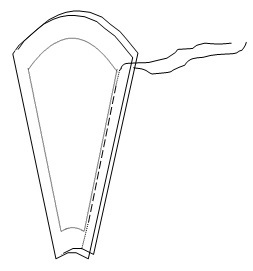
I used a combination of both hand and machine techniques to achieve the best results for my Dresden Plates.
Freezer paper templates (which can be printed off your computer from the download pattern) are ironed onto the fabrics, and two petals are machine-stitched together along the edge of the freezer paper.
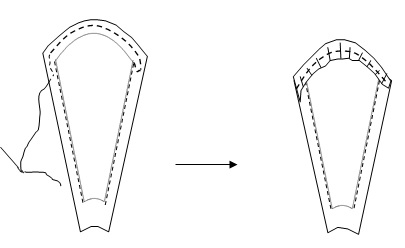
When four petals have been joined, the seam allowance around the top is gathered by hand (using the thread tails from the machine stitching, if you remember not to trim them off!).
This method gives a really smooth curve, and there is no need to clip it.
These four-petal units are then appliquéd onto the background – again, I hand stitched these, but you could use invisible machine appliqué. The rest of the assembly is done by machine.
Full, detailed instructions with plenty of extra tips and diagrams showing both variations, are given in the 16-page pattern. This can be purchased as a download from my online Shop for £8.
Click here to go back to other Card Hangers including the similar log cabin Christmas Card Hanger, the Christmas Bunting or the Multisize Bunting
Or to Wallhangings
